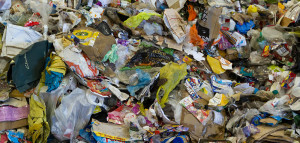Waste: nature or use?
When we try to approach the reality of a concept – or its multiple realities – one of the first search we do leads us, almost by accident, to the mother of all encyclopedias, now in search-engines one of the first sources of reference worldwide: Wikipedia . According to it, waste is any unwanted material or product considered as reject and that needs to be removed because it doesn’t have any economic value. But is this statement true? Does waste really not have any economic value?
A second and more institutional reading encourages us to consult a new source. The OECD (Organization for Economic Cooperation and Development) defines waste as ‘ those materials generated in production and consumption activities that have not reached an economic value in the context in which they are produced ‘. The difference between both meanings is small, but crucial to understand the concept that we intend to analyze and approach in this blog. Does it have economic value or not? If so, what does its economic value depend on? Which context is favorable to transform waste into economic value? Is waste actually a non- residual good?
We stop now by the definition that the European Union provides for waste, which is defined as any object or substance that the owner rejects, intends to reject or is required to reject. A new nuance brings us to reflect on what is and what is not waste. Is it waste only because of our perception?
To finally complete this definitions poker, we would like to show the idea which, in our opinion, adds further questions to this reality, and also more certainties. Thomas H. Christensen, of the Technical University of Denmark, proposed in his book ‘ Solid Waste Technology and Management’ that waste is a left-over, a redundant product or material of no or marginal value for the owner and which the owner wants to discard. However, Christensen adds, an important characteristic is that being “waste” is not an intrinsic property of an item, but depends on the situation in which the item appears as defined by its owner or, in other words, how the owner values the item. So, being or not being waste does not depend on its physical characteristics, but it depends on the owner’s point or view and on the value he or she gives to an item. In fact, what is the difference between an abandoned piece of furniture, an antique or a heirloom? Is it the physical space it occupies, or the value it has compared to that of a new piece of furniture? Or is it the value that a possible buyer could give to it? Undoubtedly, an item that has value for someone may have no value for others, and vice versa.
These are complex but also simple questions, and we will try to go through them and explore the answers and alternatives to them all. How many families live off what others consider or have considered to be ‘waste’? So is that ‘waste ‘ or ‘ worth’? Can we change the ‘W’ based on the holder’s perspective?
There is an example that is hard to understand from the point of view of social responsibility, but it is actually a reality: in some places in the world landfill feeds many families.
We are writing from Waste to Cash, a blog that is based on a different concept regarding this reality that we will try to redefine post by post, so as to build a new way of understanding waste, i.e. not as a problem but as a resource.



Comments are closed.